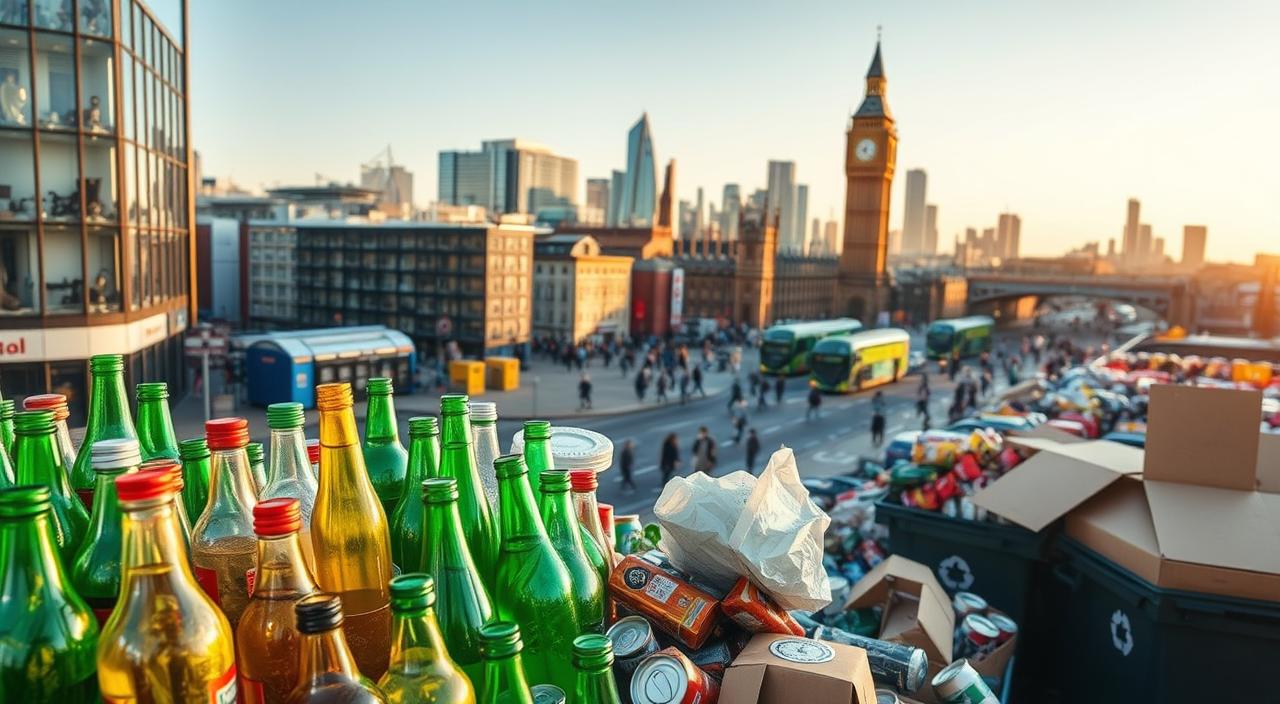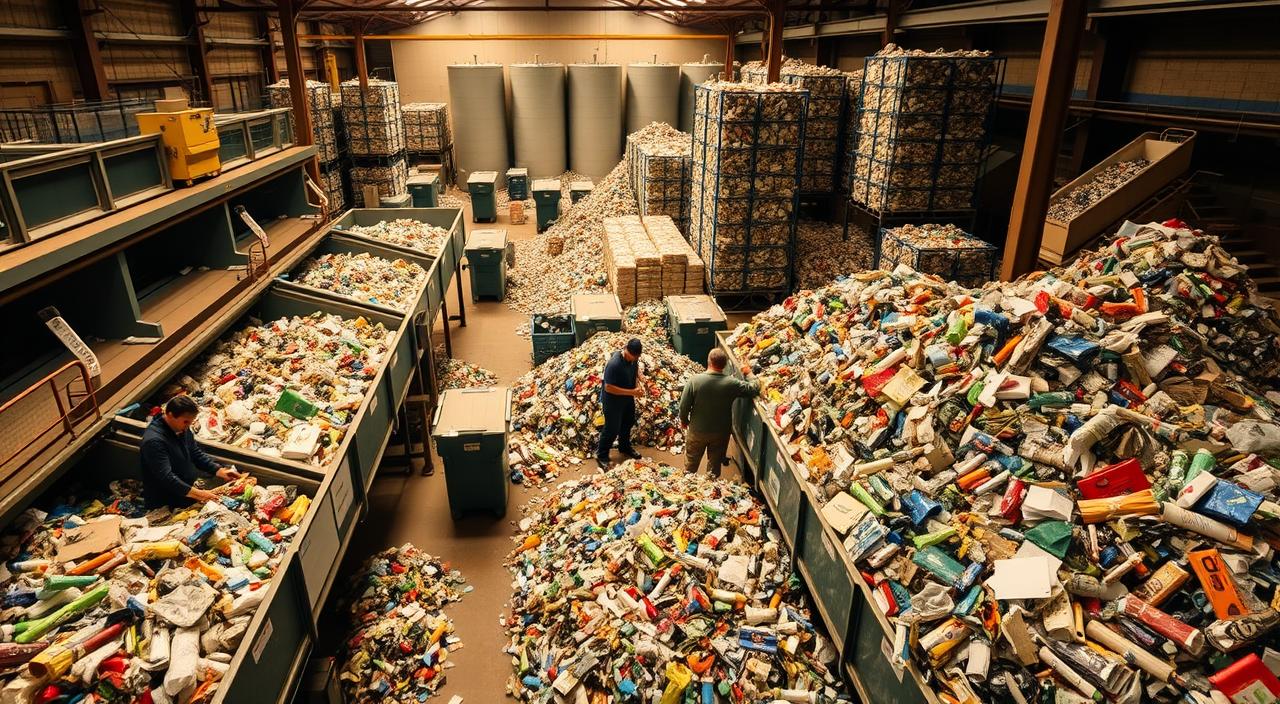
Choosing recyclable packaging in London can feel confusing for both households and businesses. With countless “green” claims on products, it’s often difficult to know which options truly help the environment. Fortunately, the city’s recycling systems continue to improve, and reliable suppliers now provide certified packaging that matches London’s real disposal routes.

This field guide shows you how to recognise recyclable packaging, understand the role of compostables, and identify which materials best suit your needs. By the end, you will confidently select packaging that avoids landfill and supports London’s sustainability goals.
Key Takeaways
- London’s councils recycle specific materials, so always check local rules.
- Compostable packaging breaks down only in industrial facilities.
- Certified recycling or composting symbols matter more than vague eco labels.
- Businesses save money and time with supplier contracts and digital tools.
- Recyclable packaging works only when properly cleaned before disposal.
Why Recyclable Packaging Matters in London
The capital generates millions of tonnes of waste every year. According to Recycle Now, much of that waste could stay out of landfill with correct sorting. However, contamination and misleading eco-labels often prevent effective recycling.
When Londoners choose recyclable packaging, they reduce carbon emissions, conserve natural resources, and strengthen the circular economy. More importantly, these small daily decisions influence the city’s progress toward its long-term zero-waste targets.
Traditional vs. Modern Packaging Materials
Outdated Plastics
For decades, takeaway boxes and disposable cutlery came from petroleum-based plastics. They were cheap and durable, yet they created mountains of waste that rarely returned to useful form.
Modern Materials
Thankfully, innovative solutions are changing the market. Today, you will find packaging designed for recycling streams or industrial composting:
- Paper and Cardboard – widely accepted across London if clean.
- Plant-Based Plastics (PLA, CPLA) – compostable, though only in special facilities.
- Sugarcane and Wheat Husk Fibres – strong, biodegradable, and popular in food service.
Because these materials combine practicality with eco-credentials, businesses now replace older single-use plastics without compromising quality.
What Actually Gets Recycled in London

Despite marketing claims, not everything labelled “eco-friendly” goes into the recycling system. Processing depends on borough infrastructure, which means one item may be recyclable in Camden but rejected in Croydon.
Here’s a quick overview:
| Material | Recyclable? | Preparation Needed |
|---|---|---|
| Clean Cardboard | Yes | Remove food residue |
| Paper (non-coated) | Yes | Rinse or wipe if dirty |
| Plastic #1 (PET) | Often | Confirm with council |
| Plastic #5 (PP) | Rarely | Needs special facilities |
| Compostable PLA | No (at home) | Requires industrial compost |
Therefore, before you purchase or dispose of packaging, take a moment to confirm local recycling codes. That simple habit prevents unnecessary waste.
How Recycling Works in London
After collection, borough trucks deliver materials to sorting centres called MRFs (Materials Recovery Facilities). There, workers and machines separate recyclables by type and quality. If food residue or grease contaminates an item, it may spoil the whole batch. Consequently, that load often ends up in landfill.
To avoid this, suppliers now include QR codes or printed instructions on packaging. When customers scan them, they see borough-specific guidance. This small detail helps households and cafés recycle with confidence.
A Shopper’s Guide to Choosing Recyclable Packaging
Step 1: Understand Your Waste Stream
Start by checking your council website. Households should confirm which plastics, papers, and compostables their borough accepts. Businesses need to review daily waste output and disposal costs.
Step 2: Select the Right Materials
- Prioritise cardboard and paper for food items.
- Use PET plastics when your local facilities process them.
- Avoid multi-layer products such as foil-lined cups.
Step 3: Work with Trusted Suppliers
Suppliers make a major difference. For example, London Bio Packaging provides certified ranges with clear disposal instructions. Their platforms now include:
- Saved baskets for repeat purchases
- Contract pricing for larger clients
- Quick search filters for recyclable or compostable items
By choosing these options, businesses reduce confusion and ensure their packaging matches London’s infrastructure.
Benefits for Businesses: Bulk and Custom Options
Cafés, restaurants, and online retailers all face unique packaging challenges. Partnering with eco-conscious suppliers provides not only greener products but also operational advantages.
| Factor | Small Business | Multi-Site Operations |
|---|---|---|
| Storage Needs | Compact packaging | Pallet-scale ordering |
| Customer Experience | Branded boxes | Standardised designs |
| Budget | Pay-as-you-go | Contract pricing |
With the right supplier, companies can align sustainability with cost savings. In addition, they gain marketing advantages by showcasing eco-friendly credentials to customers.

Beyond Recycling: Smarter Alternatives
Recyclable packaging in London isn’t the only path to sustainability. Many businesses explore compostables and reusable options. Others adopt protective materials that replace traditional plastic fillers.
- EcoWrap honeycomb paper – substitutes bubble wrap with recyclable cushioning.
- Pulp-based pizza boxes – both compostable and reusable.
- Water-activated tape – stronger and more sustainable than plastic sealing tape.
These alternatives work smarter, save space, and often cut long-term costs. For instance, a London bakery switched to pulp cake boxes and reduced plastic use by 90%. Meanwhile, a vintage book seller introduced paper cushioning and saw product returns drop by nearly 20%.
Conclusion
Making sustainable packaging choices in London requires more than good intentions. It involves understanding local facilities, reading certified symbols, and working with suppliers who value transparency. Paper and cardboard remain the most reliable recyclable packaging in London, provided they stay clean. Plastics and compostables need careful attention to borough-specific processing.
Ultimately, every shopper and business can influence change. By choosing recyclable packaging that truly fits London’s infrastructure, you help cut waste, save resources, and support the capital’s environmental progress.

 CALL NOW
CALL NOW